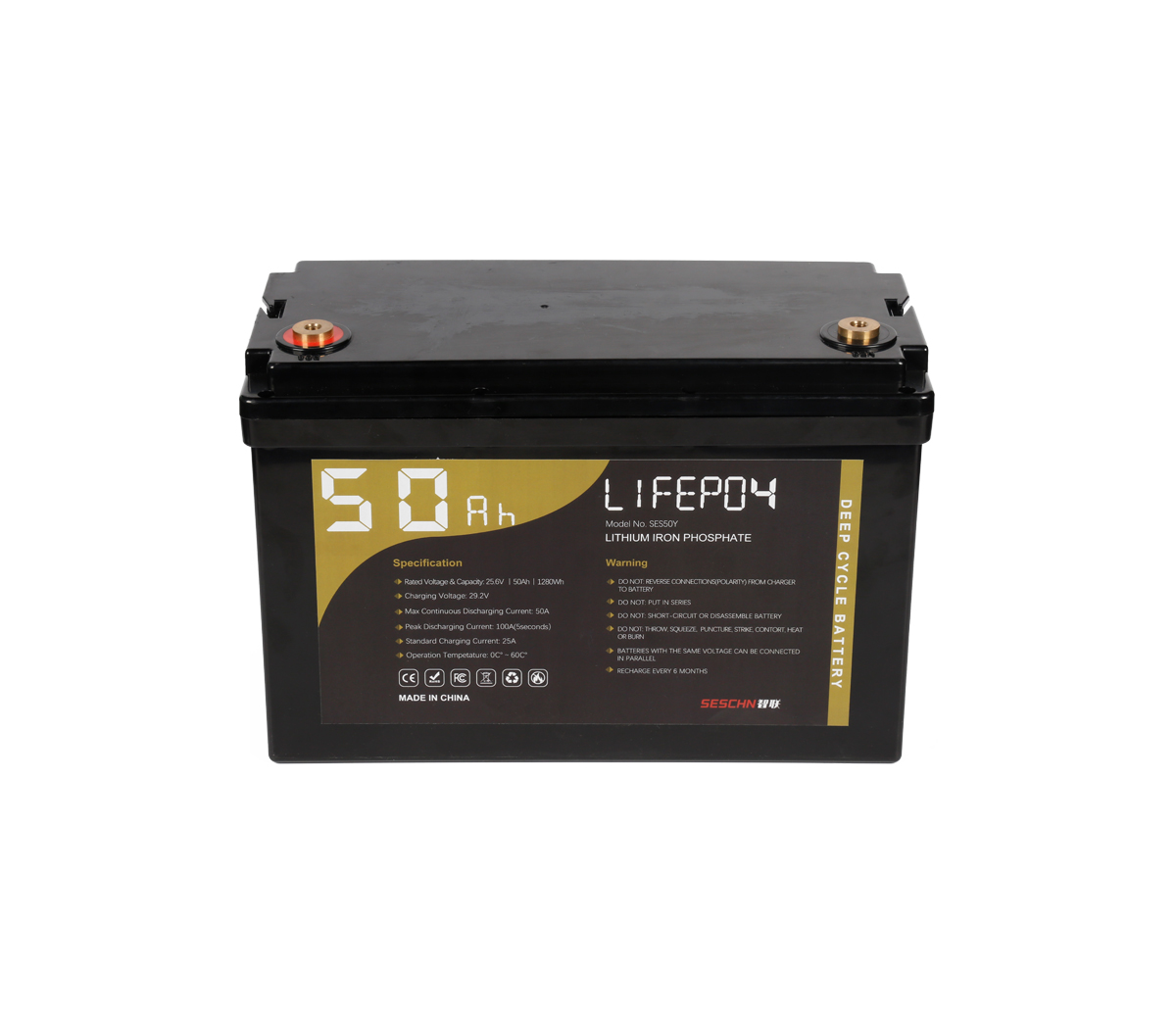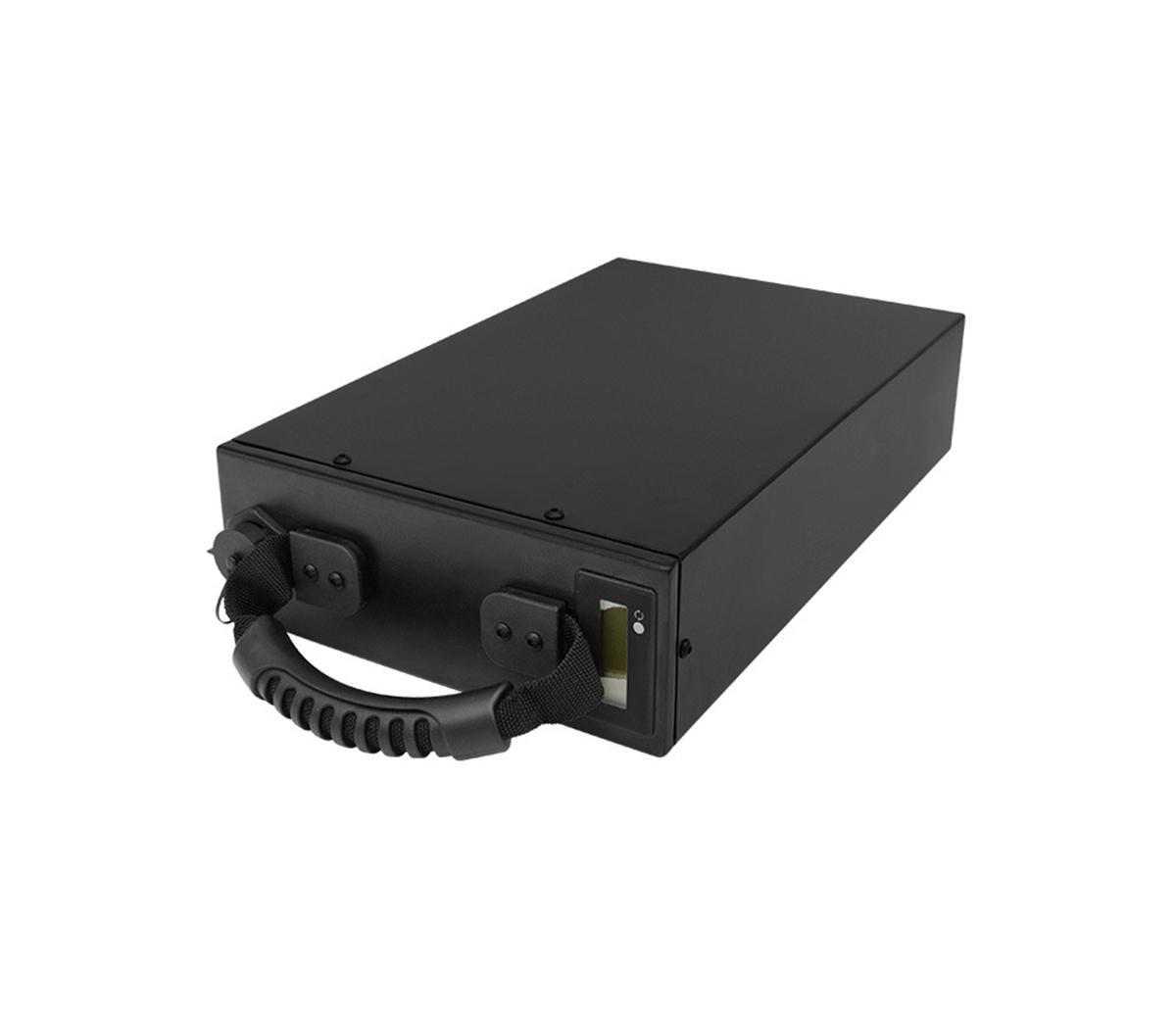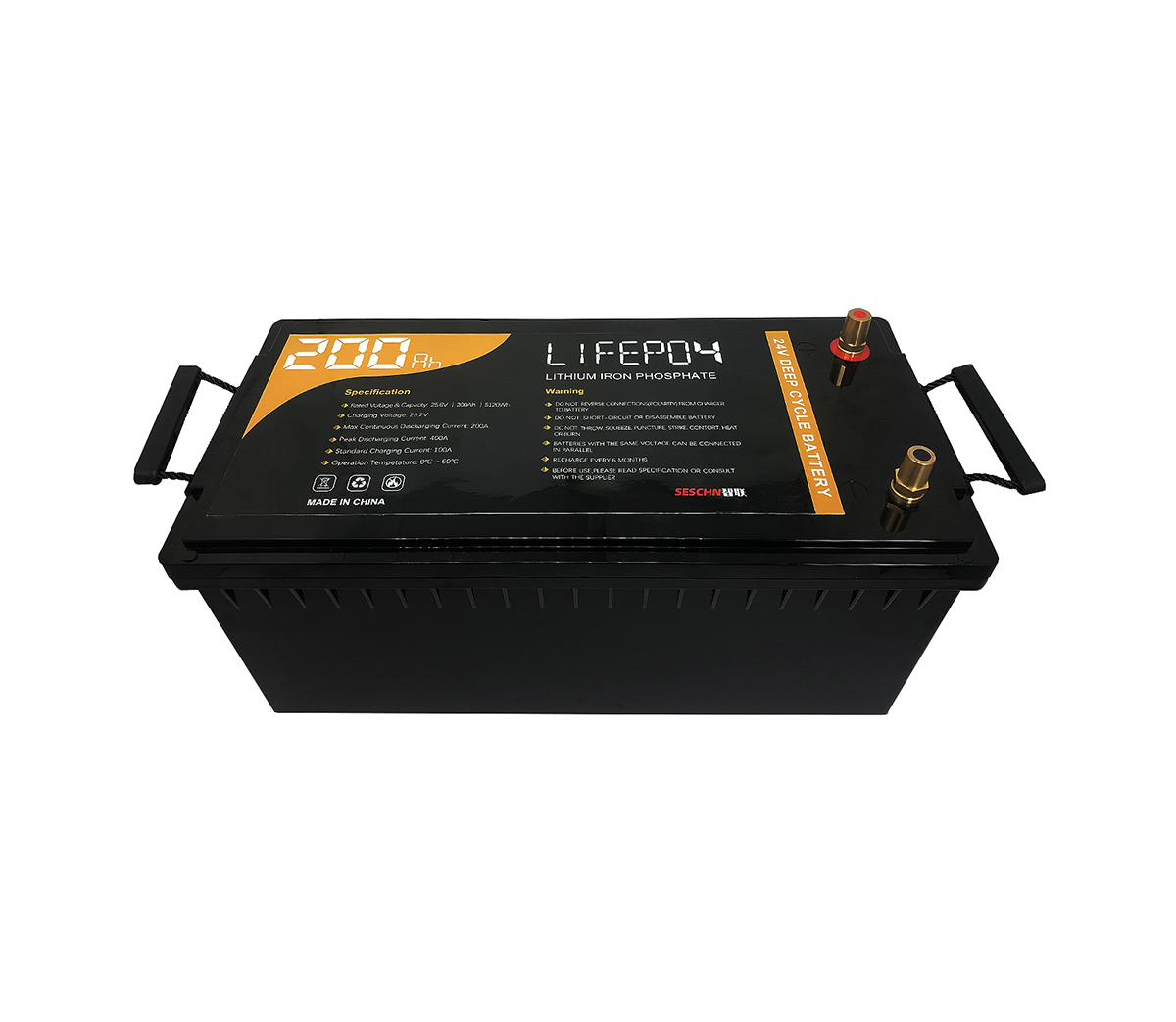A Guide to the Best Photovoltaic Power Systems
What is photovoltaic power generation
Photovoltaic power generation is a technology that uses the photovoltaic effect of the semiconductor interface to directly convert light energy into electrical energy. It is mainly composed of solar panels (components), controllers and inverters, and the main components are composed of electronic components. After the solar cells are connected in series, they are packaged and protected to form a large-area solar cell module, which is then combined with power controllers and other components to finally form a photovoltaic power generation device.
Photovoltaic power generation has now become the main force of the new energy system. It has many advantages, but its disadvantages are also obvious, that is, it is greatly affected by the weather, resulting in large and unpredictable output power fluctuations. Therefore, photovoltaic power generation is often used with lithium battery energy storage systems. Although SES Power uses lithium ion battery packs as its main product, a large proportion of our customers often use photovoltaic products. And the system is quite familiar, and we often supply corresponding photovoltaic products to end customers, so we have written this concise guide about photovoltaic products.
The history of photovoltaic power generation
In 1839, French scientist Becqurel discovered that light can cause a potential difference between different parts of a semiconductor material. This phenomenon was later called the "photovoltaic effect", or "photovoltaic effect" for short.
In 1954, American scientists Chapin and Pearson made the first practical monocrystalline silicon solar cell at Bell Labs in the United States, and the practical photovoltaic power generation technology that converts sunlight energy into electrical energy was born.
Since the 1980s, the types of solar cells have continued to increase, the scope of application has become increasingly broad, and the market scale has gradually expanded. The reason is that abundant solar radiation energy is an important energy source, which is inexhaustible, non-polluting, cheap, and freely usable by human beings. The energy of solar energy reaching the ground per second is as high as 800 MWh. If 0.1% of the solar energy on the earth's surface is converted into electricity, the conversion rate is 5%, and the annual power generation can reach 5.6 × 1012 kWh, which is equivalent to 40% of the world's energy consumption. times.
After the 1990s, photovoltaic power generation developed rapidly. By 2006, more than 10 megawatt-level photovoltaic power generation systems and 6 megawatt-level interconnected photovoltaic power stations had been built in the world. The United States is the first country to formulate a development plan for photovoltaic power generation.
From 1990 to 2005, the global average annual growth rate of photovoltaic modules was about 15%. In the late 1990s, development was even more rapid, with PV module production reaching 200 MW in 1999. The efficiency of commercial cells has increased from 10% to 13% to 13% to 15%, and the production scale has grown from 1 to 5 MW/year to 5 to 25 MW/year, and is expanding to 50 MW or even 100 MW. The production cost of PV modules falls below $3/W.
In 2011, the new installed capacity of photovoltaics in the world was about 27.5GW, and the global cumulative installed capacity exceeded 67GW. Of the total installed capacity of nearly 28GW in the world, nearly 20GW of systems are installed in Europe.
Since 2011, due to the rapid decline in manufacturing costs, the investment threshold and application restrictions of photovoltaic power generation have become less and less. In addition, energy saving and emission reduction have become practical actions of various governments. The photovoltaic industry has ushered in an unprecedented rapid development. SES Power also In this wave, it has really joined the peripheral applications of the photovoltaic industry. Among them, China is the country with the fastest growing photovoltaic power generation installations in the world.
In 2021, the world will add 156.1GW of photovoltaic installed capacity. The International Energy Agency (IEA) predicts that by 2026, renewable energy will account for nearly 95% of global electricity capacity growth, with solar photovoltaics alone accounting for more than half. The total installed PV capacity will increase from about 894GW this year to 1.826TW in 2026.
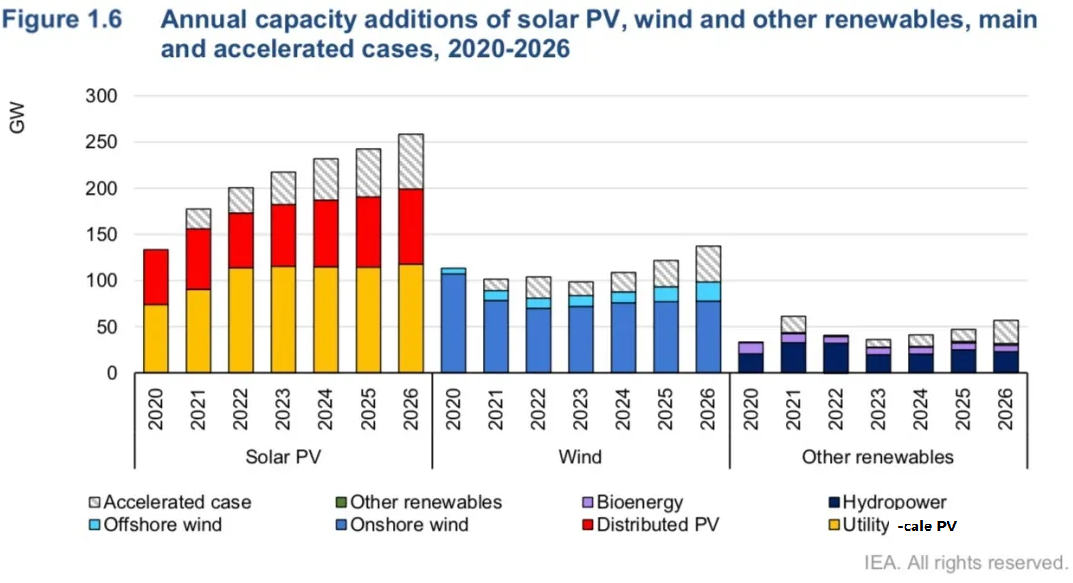
This prediction based on real data is indeed encouraging, and I hope that in the future, SES Power can cooperate with you in the photovoltaic industry full of business opportunities.
The principle of photovoltaic power generation
The main specific principle of photovoltaic power generation is the photoelectric effect of semiconductors.
When a photon irradiates a metal, its energy can be completely absorbed by an electron in the metal. The energy absorbed by the electron is large enough to overcome the internal gravity of the metal to do work, escape from the metal surface and become a photoelectron.
A silicon atom has 4 outer electrons. If pure silicon is doped with an atom with 5 outer electrons, such as a phosphorus atom, it becomes an N-type semiconductor; if pure silicon is doped with an atom with 3 outer electrons, such as Boron atoms, forming a P-type semiconductor. When the P-type and N-type are combined, a potential difference is formed at the contact surface, which becomes a solar cell.
When sunlight hits the P-N junction, holes move from the P-pole region to the N-pole region, and electrons move from the N-pole region to the P-pole region, forming a current. (The typical value of open circuit voltage is 0.5 to 0.6V).
The principle of solar cell power generation is mainly the photoelectric effect of semiconductor. The main structure of general semiconductor is as follows:
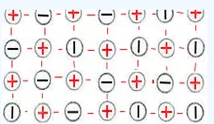
In the figure, the positive charge represents the silicon atom, and the negative charge represents the four electrons surrounding the silicon atom. When other impurities, such as boron, phosphorus, etc., are doped into the silicon crystal, when boron is doped, there will be a hole in the silicon crystal, and its formation can be referred to the following figure:
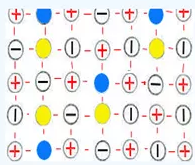
In the figure, the positive charge represents the silicon atom, and the negative charge represents the four electrons surrounding the silicon atom. The yellow one represents the doped boron atom. Because there are only 3 electrons around the boron atom, the blue hole shown in the picture will be generated. This hole becomes very unstable because there are no electrons, and it is easy to absorb electrons. And neutralization, the formation of P (posiTIve) type semiconductor. Similarly, after the phosphorus atom is doped, because the phosphorus atom has five electrons, one electron becomes very active, forming an N (negaTIve) type semiconductor. The yellow ones are phosphorus nuclei, and the red ones are extra electrons. As shown below.
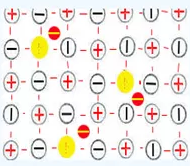
The N-type semiconductor contains more holes, while the P-type semiconductor contains more electrons, so that when the P-type and N-type semiconductors are combined, a potential difference will be formed at the contact surface, which is the PN junction.
When P-type and N-type semiconductors are combined, a special thin layer is formed in the interface area of the two semiconductors), the P-type side of the interface is negatively charged, and the N-type side is positively charged. This is because the P-type semiconductor has many holes and the N-type semiconductor has many free electrons, resulting in a concentration difference. The electrons in the N region will diffuse into the P region, and the holes in the P region will diffuse into the N region. Once diffused, an "internal electric field" directed from the N to the P is formed, thereby preventing the diffusion from proceeding. After reaching equilibrium, such a A special thin layer forms a potential difference, which is the PN junction.
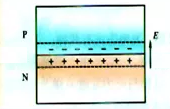
When the wafer is exposed to light, in the PN junction, the holes of the N-type semiconductor move to the P-type region, and the electrons in the P-type region move to the N-type region, thereby forming a current from the N-type region to the P-type region. A potential difference is then formed in the PN junction, which forms the power supply. (As shown below)

Since semiconductors are not good conductors of electricity, if electrons flow in the semiconductor after passing through the p-n junction, the resistance is very large and the loss is very large. However, if the upper layer is fully coated with metal, sunlight cannot pass through and current cannot be generated. Therefore, the p-n junction is generally covered with a metal grid (as shown in the comb-shaped electrode) to increase the area of incident light. In addition, the silicon surface is very bright, which reflects a lot of sunlight and cannot be used by the battery. To this end, scientists coated it with a protective film with a very low reflection coefficient, reducing the reflection loss to 5% or less. After all, the current and voltage that a battery can provide is limited, so people use many batteries (usually 36) in parallel or in series to form solar photovoltaic panels.
Application fields of photovoltaic power generation
A.User solar power supply: (1) Small power supply ranging from 10-100W, used in remote areas without electricity such as plateaus, islands, pastoral areas, border posts and other military and civilian life electricity, such as lighting, TV, tape recorders, etc.; (2) 3 -5KW roof grid-connected power generation system for households; (3) Photovoltaic water pump: solve the drinking and irrigation of deep wells in areas without electricity.
B. Traffic fields such as beacon lights, traffic/railway signal lights, traffic warning/signal lights, Yuxiang street lights, high-altitude obstacle lights, highway/railway wireless telephone booths, unattended road class power supply, etc.
C. Communication/communication field: solar unattended microwave relay station, optical cable maintenance station, broadcasting/communication/paging power supply system; rural carrier telephone photovoltaic system, small communication machine, GPS power supply for soldiers, etc.
D. Petroleum, marine and meteorological fields: cathodic protection solar power supply systems for oil pipelines and reservoir gates, life and emergency power supplies for oil drilling platforms, marine detection equipment, meteorological/hydrological observation equipment, etc.
E. Home lighting power supply: such as garden lamps, street lamps, portable lamps, camping lamps, mountaineering lamps, fishing lamps, black light lamps, tapping lamps, energy-saving lamps, etc.
F. Photovoltaic power station: 10KW-50MW independent photovoltaic power station, wind-solar (diesel) complementary power station, various large parking plant charging stations, etc.
G. Solar buildings combine solar power generation with building materials to make future large-scale buildings self-sufficient in electricity, which is a major development direction in the future.
H. Other fields include: (1) Matching with automobiles: solar vehicles/electric vehicles, battery charging equipment, automotive air conditioners, ventilation fans, cold drink boxes, etc.; (2) regenerative power generation systems for solar hydrogen production and fuel cells; (3) various (4) Satellites, spacecraft, space solar power stations, etc.
solar cell terminology
①Short Circuit Current (Isc)
When the positive and negative electrodes of the solar cell are short-circuited to make u=0, the current at this time is the short-circuit current of the cell. The unit of the short-circuit current is ampere (a), and the short-circuit current changes with the change of light intensity.
②Voltage of open circuit (uoc or Voc)
When the positive and negative poles of the solar cell are not connected to the load and i=0, the voltage between the positive and negative poles of the solar cell is the open-circuit voltage, and the unit of the open-circuit voltage is volts (v). The open circuit voltage of a monolithic solar cell does not change with the increase or decrease of the cell area, and is generally 0.5 to 0.7v.
③Maximum operating current (Im or Imax)
Also called the best working current. The maximum operating current refers to the operating current when the solar cell outputs the maximum power, and the unit is ampere (a).
④ maximum operating voltage (Vm or Vmax)
Also called the best working voltage. The maximum working voltage refers to the working voltage when the solar cell outputs the maximum power, and the unit of the peak voltage is v. The maximum working voltage does not change with the increase or decrease of the cell area, generally 0.45~0.5v, and the typical value is 0.48v.
⑤Maximum output power (Pm or Pmax)
Also called optimal output power. The maximum output power refers to the maximum output power of the solar cell under normal working or test conditions, that is, the product of the maximum working current and the maximum working voltage: Pm===Im×Vm, the unit is w (watts). The maximum output power of a solar cell depends on the solar irradiance, the solar spectral distribution and the operating temperature of the cell, so the measurement of the solar cell should be carried out under standard conditions. Illumination lkw/㎡, spectrum aml.5, test temperature 25℃.
⑥ Fill factor (ff)
The fill factor, also called the curve factor, refers to the ratio of the maximum output power of the solar cell to the product of the open-circuit voltage and short-circuit current. The calculation formula is ff=Pm/(Isc×uoc). Fill factor is an important parameter to evaluate the output characteristics of solar cells. The higher its value, the more rectangular the output characteristics of solar cells are, and the higher the photoelectric conversion efficiency of the cells is.
The series and parallel resistances have a great influence on the fill factor. The smaller the series resistance of the solar cell, the greater the parallel resistance, and the greater the fill factor coefficient. The coefficient of the fill factor is generally between 0.5 and 0.8, and it can also be expressed as a percentage.
⑦Conversion efficiency (η)
Conversion efficiency refers to the ratio of the maximum output power of the solar cell when it is illuminated to the solar energy power irradiated on the cell. which is:
η=Pm (peak efficiency of cell)/a (area of cell)×Pin (incident light power per unit area), where Pin=lkw/㎡=100mw/cm2.
Classification of solar cells
There are many classifications of solar cells. According to the production materials, it is divided into silicon-based semiconductor batteries, CdTe thin film batteries, CIGS thin film batteries, dye-sensitized thin film batteries, organic material batteries, etc.
Among them, crystalline silicon cells are further divided into monocrystalline silicon solar cells, polycrystalline silicon solar cells and amorphous thin-film cells.
Among silicon-based solar cells, the efficiency of monocrystalline silicon cells is 25.0%, the efficiency of polycrystalline silicon cells is 20.4%, the efficiency of CIGS thin film cells is 19.6%, the efficiency of CdTe thin film cells is 16.7%, and the efficiency of amorphous silicon (amorphous) thin film cells is 10.1%
Silicon wafers are the basis of photovoltaic products, which are further processed into crystalline silicon cells, and the cells are arranged, packaged and combined with other auxiliary materials to become the smallest effective power generation unit of photovoltaic systems - solar panels.
Monocrystalline silicon has excellent crystal quality, electrical properties, mechanical properties, etc., and better photoelectric conversion efficiency, but the cost is high, and it has not been widely used in the early stage. Relying on the price advantage, polysilicon dominated the market for a long time.
From the appearance, the four corners of the monocrystalline silicon cell are arc-shaped and have no pattern on the surface; while the four corners of the polycrystalline silicon cell are square and the surface has a pattern similar to ice flowers; the non-crystalline silicon cell is what we usually Speaking of thin-film modules, unlike crystalline silicon cells, the grid lines can be seen, and the surface is as clear and smooth as a mirror.
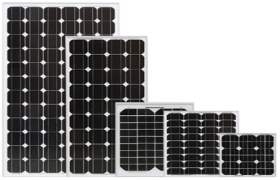
(Monocrystalline)
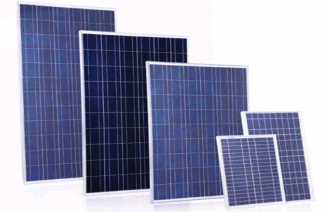
(Polycrystalline)
With the continuous progress of the production process, the production cost of monocrystalline silicon has dropped rapidly. At the same time, the new generation battery technology represented by PERC cells (Passivated emitter rear contact solar cells, the current mainstream photovoltaic cells) has The utilization rate of monocrystalline silicon wafers is higher, which further opens up the photoelectric conversion efficiency that already has a gap.
Under the trade-offs of cost and conversion efficiency, monocrystalline silicon has risen rapidly. By the end of 2020, the market share of monocrystalline silicon wafers has increased from 20% in 2016 to more than 90%, realizing a comprehensive replacement for polycrystalline silicon wafers.
Silicon wafer manufacturing focuses on reducing production costs, and one of the measures is to increase the size of the single wafer. The larger silicon wafer area means that the total power of the cells/modules produced per unit time is higher, and the corresponding production cost per watt is diluted.
At present, the 156.75mm and 158.75mm specifications of photovoltaic silicon wafers are being rapidly eliminated, 166mm has become the mainstream, and the production capacity of 182mm and 210mm is also continuously improved and applied. The reason is that the power generation efficiency of large-sized silicon wafers is higher, and the non-silicon cost of the end product (energy, labor, auxiliary materials, etc. consumed in production) is lower.
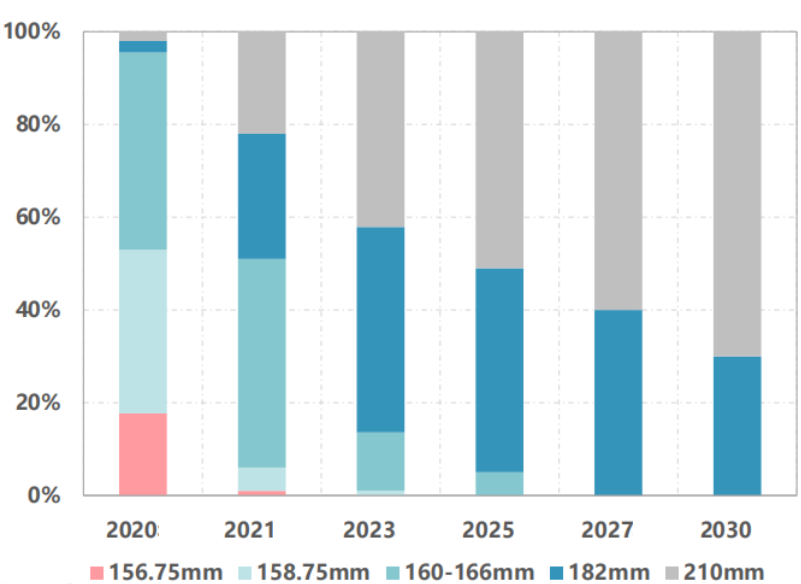
Decreasing silicon wafer thickness is another long-term trend—effectively reducing silicon consumption, increasing wafer counts, and reducing costs. At present, the mass production thickness of monocrystalline silicon wafers is 170~180μm, and some manufacturers have been able to achieve the production of 140μm monocrystalline silicon wafers, and there is considerable room for cost reduction in the future.
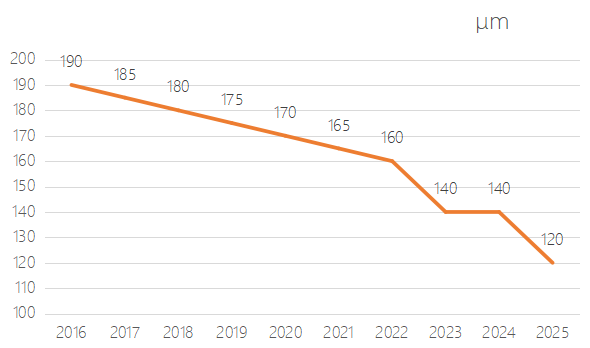
Although there is a battery route that does not use silicon wafers, it is far from commercialization and is far from shaking the dominance of silicon batteries. In the next few years, how to produce silicon materials more efficiently, reduce the cost of silicon wafers, and reduce the cost of subsequent installation will still be the persistent direction of the photovoltaic industry.
The silicon wafers are eventually combined to form photovoltaic modules. The panel design of components generally starts from two directions. One is to determine the power and size of the module according to the power and size of the existing cells; the other is to select the size and power of the cell according to the size and power requirements of the module.
Regardless of the power, battery modules are generally composed of 36, 72, 54, and 60 in series. Common arrangement methods are 4 pieces × 9 pieces, 6 pieces × 6 pieces, 6 pieces × 12 pieces, 6 pieces × 9 pieces and 6 pieces × 10 pieces.
The composition of photovoltaic power generation system
The photovoltaic power generation system is composed of photovoltaic array (PV Array), battery pack, charge and discharge controller, inverter, AC power distribution cabinet, sun tracking control system and other equipment. Some of its equipment functions are:
A: Photovoltaic array (PV Array)
Photovoltaic array (PV Array) is composed of several photovoltaic modules or photovoltaic panels assembled together in a certain way, and has a supporting structure at the same time.
B: battery pack
The function is to store the electric energy emitted by the solar cell array when it is illuminated and to supply power to the load at any time. The basic requirements for the battery pack used in solar cell power generation are: a. low self-discharge rate; b. long service life; c. strong deep discharge capability; d. high charging efficiency; e. less maintenance or maintenance-free; f. working temperature Wide range; g. low price.
In the past, lead-acid batteries were generally used as energy storage batteries, but as the cost of lithium batteries, especially lithium iron phosphate batteries that can perfectly replace lead-acid batteries has gradually decreased, lead-acid batteries have been gradually replaced, and SES Power is also Because of this trend, LiFePO4 batteries were launched a long time ago to replace lead-acid batteries. The size fully conforms to the original lead-acid specifications and is very suitable for direct replacement.
C: controller
It is a device that can automatically prevent the overcharge and overdischarge of the battery. Since the number of cycles of charge and discharge and the depth of discharge of the battery are important factors in determining the service life of the battery, a charge and discharge controller that can control the overcharge or overdischarge of the battery pack is an essential device.
D: Inverter
An inverter is a device that converts direct current to alternating current. Since solar cells and batteries are DC power sources and the load is an AC load, an inverter is essential. According to the operation mode, inverters can be divided into independent operation inverters and grid-connected inverters.
Stand-alone inverters are used in stand-alone solar cell power systems to power stand-alone loads. Grid-connected inverters are used for grid-connected solar cell power generation systems.
The inverter can be divided into square wave inverter and sine wave inverter according to the output waveform. The square wave inverter has a simple circuit and low cost, but has a large harmonic component. It is generally used in systems below several hundred watts and with low harmonic requirements. Sine wave inverters are expensive, but can be applied to various loads.
E: Tracking system
Compared with a solar photovoltaic power generation system at a fixed location, the sun rises and sets every day in four seasons of a year, and the sun's illumination angle changes all the time. If the solar panel can always face the sun, the power generation efficiency will be improved. reach the best condition.
The sun tracking control systems commonly used in the world all need to calculate the angle of the sun at different times of each day of the year according to the latitude and longitude of the placement point, and store the sun position at each time of the year in PLC, single-chip computer or computer software. , that is, by calculating the position of the sun to achieve tracking.
F: Energy storage battery controller (optional)
It is a device that can automatically prevent the overcharge and overdischarge of the energy storage battery.
Because the number of cycles of charge and discharge and the depth of discharge of the battery are important factors that determine the service life of the battery, and for lithium batteries with certain safety hazards, the battery controller is an essential device.
How to design an independent photovoltaic off-grid power generation system for the family?
The photovoltaic off-grid power generation system has the advantages of flexibility, strong applicability, and low construction cost, and is very suitable for use in areas with unstable power. As the concept of Tesla's Powerwall is gradually accepted by ordinary consumers, small and medium-sized photovoltaic off-grid power generation systems are increasingly favored by home energy storage users. However, when SES Power communicated with these end customers, they found that they did not know much about these power generation systems, which made the SES Power team very worried, because in addition to affecting the customer's use experience, there may also be potential safety hazards.
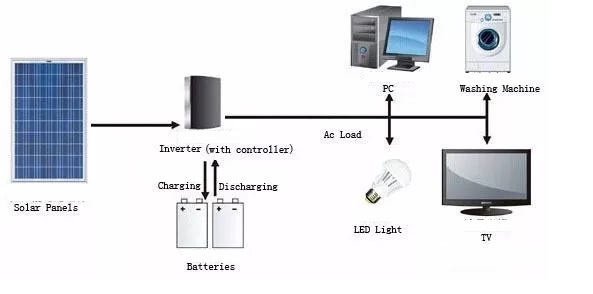
The senior engineer of SES Power believes that when designing photovoltaic off-grid power generation systems, we should be flexible and do not stick to a certain fixed formula. Generally, we will follow the following principles:
A. Confirm the power of the inverter according to the user's load type and power
Loads are generally divided into inductive loads and resistive loads. Loads with motors such as washing machines, air conditioners, and range hoods are inductive loads. Lighting lamps, heating elements, etc. are resistive loads.
The starting power of the inductive load is 5-7 times the rated power, and the starting power of the resistive load is equal to the rated power.
When calculating the power of the inverter, the starting power of these loads needs to be taken into account.
For general households, considering that all loads cannot be turned on at the same time, the sum of the load power can be multiplied by a factor of 0.6-0.9.
B. Confirm the power of photovoltaic modules according to the user's daily electricity consumption.
The design principle of photovoltaic modules is to meet the average weather conditions, and the annual power generation should be equal to the user's annual electricity consumption.
The photovoltaic module design requires that the energy storage battery can be fully charged basically every day in the worst light season.
However, in some areas, the illuminance in the worst season is far lower than the annual average. If the formula design is rigidly applied, the annual power generation will seriously exceed the standard, which will eventually lead to waste.
C. Consider the efficiency of the controller and the loss of the machine and the loss of the battery
There are two types of solar controllers: PWM and MPPT. The efficiency of the PWM controller is about 85%, and the input voltage range is relatively narrow, but the price is relatively low. The efficiency of the MPPT controller is about 95%, and the price is relatively high.
In the process of charging and discharging, lead-acid batteries will also have 10-15% loss, while lithium batteries can be controlled within 3%.
The amount of electricity available in the off-grid system = total component power * average solar power generation hours * controller efficiency * battery efficiency.
D. Determine the capacity of the energy storage battery according to the user's power consumption at night or the expected standby time
Battery design capacity = (average daily power consumption of load * number of consecutive rainy days) ÷ battery discharge depth.
For general loads such as solar street lights, it can be selected according to experience or needs within 2 to 3 rainy days
Pick. Important loads such as communications, navigation, and hospital treatment are selected within 3 to 7 rainy days. In remote locations, the battery capacity should be designed to be larger, because it will take a long time for maintenance personnel to reach the site.
In the photovoltaic power generation system, if all lead-acid batteries are used, the depth of discharge is generally between 0.5-0.7; if the lithium iron phosphate battery is used, the depth of discharge is generally between 0.8-0.9.
Lithium iron phosphate battery is the best partner for photovoltaic power generation
In many photovoltaic power generation scenarios, batteries are a very important part of energy storage. Especially in photovoltaic off-grid systems, batteries are a must partner, just like a baseball bat cannot do without a baseball.
The reason is very simple:
1. The photovoltaic power generation time and the load power consumption time are not necessarily synchronized
Photovoltaic power generation is often the highest at noon, but many users only use electricity at night, which requires the use of batteries.
2. The photovoltaic power and load power are unstable
Photovoltaic power generation is affected by the intensity of sunlight radiation and is not very stable. The load is also not stable, such as air conditioners and refrigerators, the starting power is large, but the normal operating power is less. The energy storage battery is equivalent to a power balance device.
When SES Power provides solutions to many customers, almost all customers of photovoltaic products are advised to abandon the bulky and unenvironmental lead-acid batteries and replace them with lithium iron phosphate batteries that can perfectly replace lead-acid batteries. Deep understanding of rechargeable batteries:
A: The energy weight of lithium batteries is much higher than other types of batteries. At present, the energy-to-weight ratio of commonly used lithium batteries can reach 450-620Wh/kg, which is 5-7 times that of lead-acid batteries.
B: During the life cycle of photovoltaic energy storage systems and UPS systems, lithium batteries need to be replaced much less frequently than lead-acid batteries (or may not need to be replaced).
C: Lithium battery has high voltage and light weight. The single-cell voltage of lithium battery can reach 3.7V or 3.2V. It is equal to the series voltage of 2-4 nickel-metal hydride batteries or nickel-chromium batteries.
D: Lithium batteries, especially lithium iron phosphate batteries, have a cycle life of more than 10 times that of lead-acid batteries.
E: The service life of lithium batteries is very long, especially the service life of lithium iron phosphate batteries can theoretically be used for more than 5 years, up to 9 years.
F: The charging speed of lithium battery is fast, which is 4 times or more than that of lead-acid battery.
G: Lithium batteries are green and environmentally friendly. Lithium batteries do not contain harmful substances such as lead, mercury and cadmium. Lead-acid batteries are the hardest hit by environmental problems.
H: Although the upfront cost of lead-acid batteries is much lower, the cost of lithium-ion batteries will be greatly reduced due to the huge increase in the market demand for lithium batteries in the next decade.

The above picture shows the trend of the overall demand for backup batteries in data centers in North America and Europe. Note that the market share of lithium-ion batteries will increase from 1% to 35%, and lithium iron phosphate is the main force here. Photovoltaic power generation is inseparable from inverters, and the same is true for data centers. Backup batteries in data centers have shown such a trend. SES Power has sufficient reasons to believe that the final choice of batteries for photovoltaic power generation products with similar uses will definitely be lithium-ion batteries. Lithium iron phosphate battery inside.
How to choose accessories for photovoltaic power generation system?
The previous article introduced the general composition of the photovoltaic power generation system. Thanks to today's developed information and logistics, ordinary users can DIY a home photovoltaic power generation system. SES Power often encounters inquiries from customers, such as why there is such a big difference in the quotations of different manufacturers for solar panels and inverters that look similar? Why are the price and performance promises of manufacturers of the same specifications of lithium iron phosphate batteries so different?
Plate
A: Solar photovoltaic panels
It is mainly divided into three categories: A, B, and C. Class A boards are the best, class B a little less, and class C boards are recycled boards (refurbished old boards). Class A boards can also be subdivided into two grades, A+ and A-, the same as Class B. Different grades of solar panels have a very large cost gap, and the sales price will naturally vary significantly.
Good photovoltaic panels and poor panels have a very large difference in power generation. The photovoltaic power stations we install need to be used for at least 20 years. Once economic losses are caused due to quality problems, the gains will outweigh the losses.
Therefore, when choosing photovoltaic panels, you must choose products from regular manufacturers. They have product certification and various testing certificates, and the quality is guaranteed.
B: Inverter
The key points that determine the cost of the inverter are power size and performance. Photovoltaic panels and inverters are the core of photovoltaic power generation, and the quality of the products directly affects their service life, power generation, attenuation rate and other important parameters.
Of course, when choosing an inverter, you must choose a well-known product. The quality of the inverter will also affect the power generation and the return on investment.
C: energy storage system, lithium battery pack
This is an accessory with a very large cost in the entire home photovoltaic power generation system. Although it is the consensus of many photovoltaic product users to choose lithium iron phosphate batteries that can perfectly replace lead-acid batteries, the performance description, price, and service of products on the market are almost as confusing as scraps of paper in a hurricane.
Since lithium batteries are products with certain safety hazards, SES Power recommends that you take quality as the first option. A high-quality lithium battery supplier must have many years of industry experience, a strong R&D team, and an excellent manufacturing plant just like SES Power. Then, on the basis of quality, suppliers are required to clarify the brand and source of battery cells (cost ratio is high) and BMS, so as to prevent bad manufacturers from making lithium battery packs with used goods or recycled batteries. Finally, it is recommended that when making business judgments, you must compare the industry's general costs or prices. Too high or too low prices are actually hidden traps, because no one will do business at a loss.
D: Bracket, counterweight
The bracket is a special bracket for placing, installing and fixing solar photovoltaic panels in the solar photovoltaic power generation system. The general materials are hot-dip galvanized carbon steel, anodized aluminum alloy, stainless steel, etc. The connection assembly between the brackets must be assembled with nuts and connectors.
The main methods of counterweight are cement piers, steel structures, chemical anchor bolts, etc. For household use, cement piers that have been poured to meet the installation standards are generally used as counterweights. The use of expansion bolts to fix the bracket on the roof will easily damage the waterproof layer of the roof, and it will loosen and break after a long time.
E: Insurance
Whether it is a family or a business, insurance is very, very important. In the event of some accidents such as natural disasters, we can enjoy full compensation from the insurance company.
Q & A of solar photovoltaic power generation system
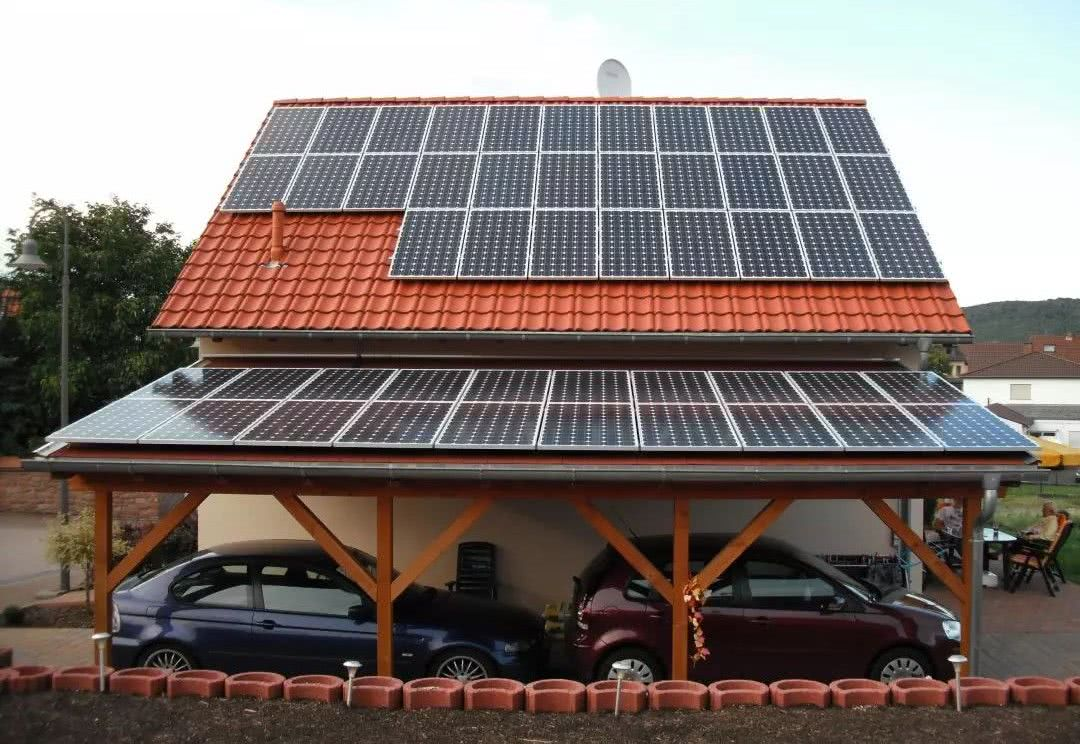
Q: Will there be insufficient power when it is cold in winter?
A: The factors that directly affect the power generation are radiation intensity and, sunshine duration and ambient temperature. In winter, the ambient temperature decreases, the intensity of sunlight becomes weaker, and the sunshine time becomes shorter, so the power generation will be less than that in summer.
Q: Does photovoltaic power generation have radiation and pollution?
A: Photovoltaic power generation is free of radiation and pollution. However, PV panels and energy storage batteries contain certain pollution sources, which will cause certain environmental pollution when they are scrapped and recycled. Qualified recyclers must be selected.
Q: Application scope and installation method of distributed photovoltaic power generation system?
A: It can be installed in any place where there is sunlight, including the ground, the top of buildings, side elevations, balconies, etc. There are three types of installation methods: concrete, color steel plate and tile type.
Q: How to consider the impact of loads on photovoltaic arrays and buildings?
A: From the perspective of safety and stability, it is necessary to consider the effects of permanent loads, wind loads, snow loads, and temperature loads on photovoltaic arrays and buildings. During the design, it is necessary to ensure that the photovoltaic modules, brackets and phalanx foundations have sufficient strength and rigidity to resist the local extreme climate. Before installation, the load capacity of the building should be surveyed, calculated and checked.
Q: If there is continuous rain or haze after installation, will the photovoltaic power generation system still work?
A: In the case of continuous rainy or foggy weather, if the working voltage of the photovoltaic system cannot reach the starting voltage of the inverter, the system will not work.
Q: Will distributed photovoltaic power generation affect the power supply quality of the grid?
A: The main indicators to measure the quality of power supply are voltage, frequency and waveform. The electricity generated by the photovoltaic power generation system needs to pass the grid inspection before it can be integrated into the grid.
Q: Is the power generation monitoring of the distributed photovoltaic grid-connected system the same as the metering data of the electricity meter? How big is the error?
A: The measurement data of the two are not necessarily the same. The monitoring equipment used in the photovoltaic grid-connected system is often the equipment used by itself, while the metering equipment is often installed by the power department. Therefore, the data obtained may have some gaps due to different sources of equipment. The settlement of electricity and subsidy charges is based on metering equipment installed by the power sector.
Q: What are the benefits of installing photovoltaic power generation systems for industrial and commercial users?
A: The advantages are: large industrial and commercial electricity consumption, high electricity price, large proportion of self-generated and self-consumption, short payback period and high yield, which can help industrial users to achieve energy-saving and emission-reduction targets.
Q: How to estimate the power generation of a distributed photovoltaic grid-connected system?
A: This requires knowing the effective sunshine time, system efficiency, and system installation capacity of the installation site. For example, a 1000-watt photovoltaic grid-connected system, the installation location is Tokyo, the effective sunshine time is 4 hours, and the system efficiency is 80%. The calculation formula for the daily power generation of the system = module installation capacity × effective sunshine hours × system efficiency = 1000 × 4 ×0.8=3200wh, about 3.2 kWh.
Q: Is there any noise hazard in the photovoltaic power generation system?
A: Photovoltaic power generation system converts solar energy into electrical energy without noise. The noise index of the inverter is not higher than 65 decibels, and there will be no noise impact.
Q: Will the shade of houses, leaves or even bird droppings on the photovoltaic modules affect the power generation system?
A: This has a relatively large impact on the power generation system and will cause the so-called hot spot phenomenon. Hot spots are shaded solar modules that will be used as loads to consume energy from other illuminated solar modules. It can heat up badly and even fail.






















